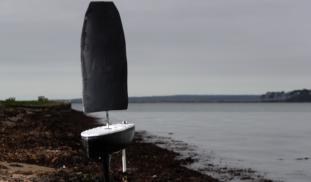20
0
0
Like?
Please wait...
About This Project
Expanding the horizon of data collection at sea, our project aims to use innovative, small autonomous micro-vessels to detect wave profiles, facilitating low-cost, continuous wave monitoring. We will collect and compare our data with a surface following buoy to evaluate the viability of using autonomous wind-powered vessels, which exhibit non-wave induced motion, for sea wave monitoring.
More Lab Notes From This Project

Browse Other Projects on Experiment
Related Projects
Can wind powered micro-vessels provide reliable wave monitoring?
Expanding the horizon of data collection at sea, our project aims to use innovative, small autonomous micro...
Can we identify individual manta rays in real-time using AI and remote technology?
This project combines AI, high-resolution cameras, and existing manta behavior research to test a program...

